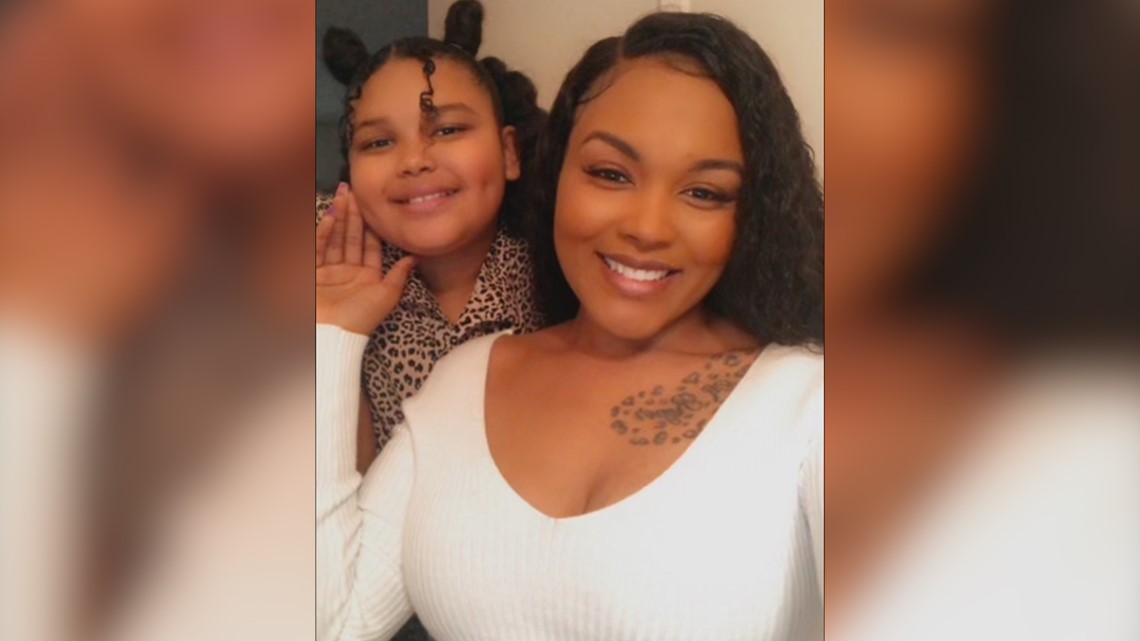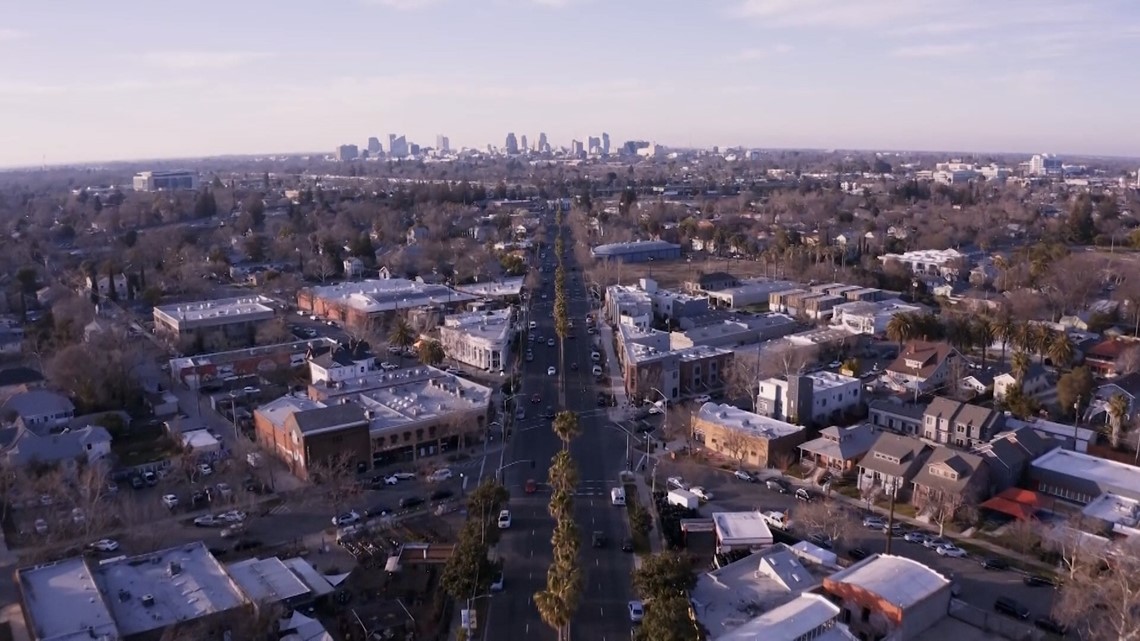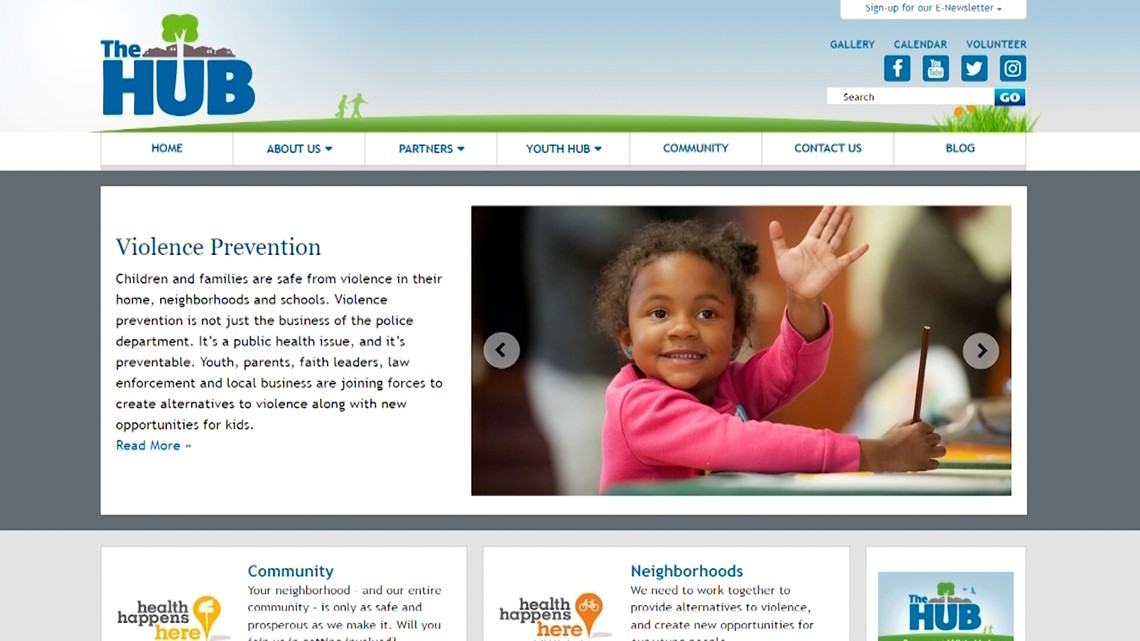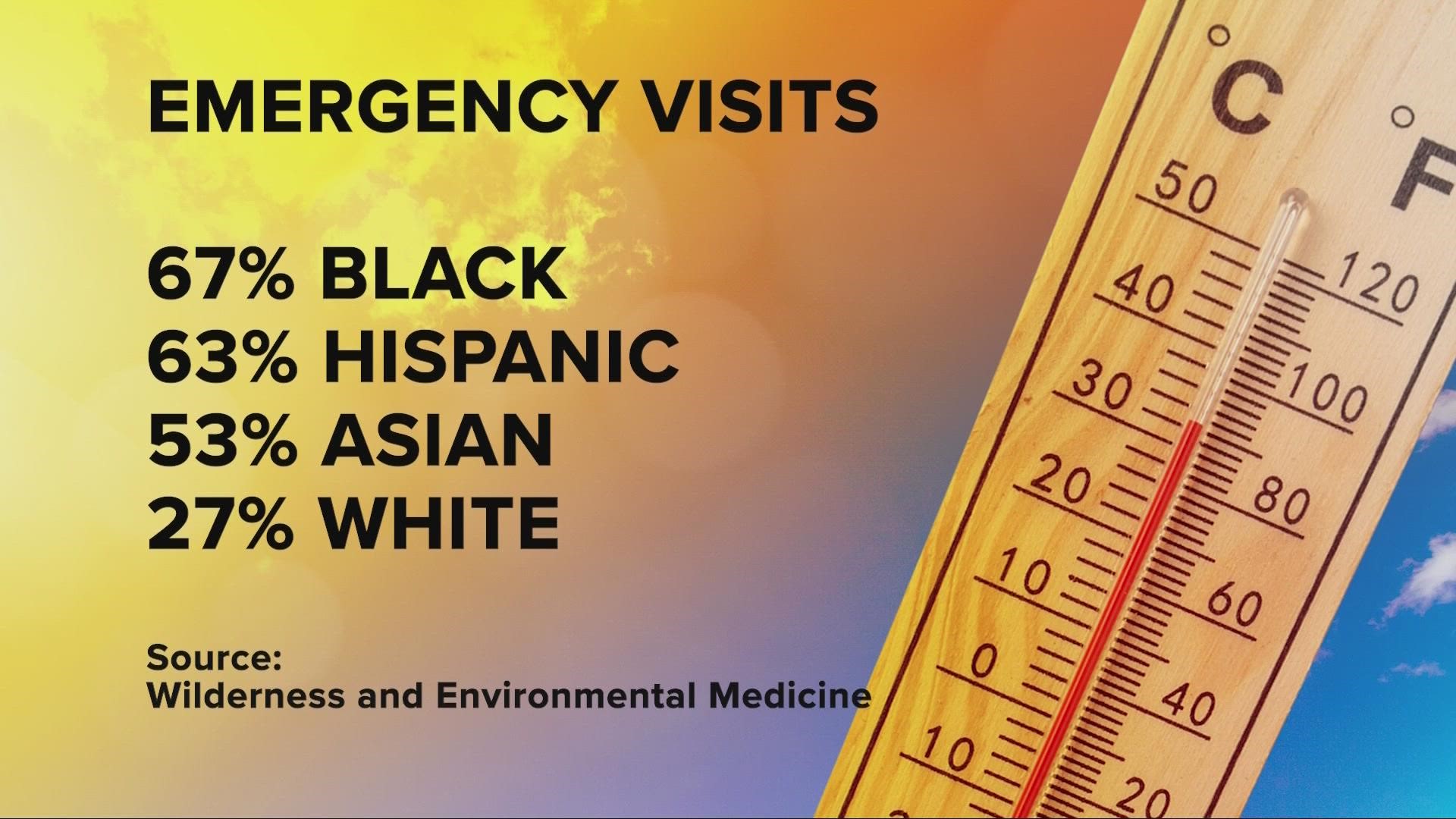SACRAMENTO, Calif. — California is facing extreme heat this summer with temperatures in the triple digits. At this point, everyone is trying to beat the heat.
Kesha Holmes lives in Sacramento's Oak Park neighborhood. Each summer, she says she prepares for the heat by purchasing water, fans, and avoiding the kitchen area at home.
"Oh man, when it's triple digits, I get scared," Holmes said. "It's dangerous. In the summertime, I do not cook as much because it gets really hot. If I do cook, I have to use the fan in the kitchen."
Since Holmes lives in a house without central air conditioning, she says staying cool is a challenge. Once the air conditioning is on, she says the living room is cool. But the kitchen area, along with other rooms in the home, remain hot and uncomfortable. As a result, she typically visits family and friends who have central air conditioning for safety reasons.
"I'm a single mother and I work," Holmes said. "I do my best to make sure my house is, at least, somewhat stable and cool. But, since I do not have central A/C, my room does not get cool. It's literally in the heat."


According to the U.S. Centers for Disease Control and Prevention, more than 600 people in the U.S. are killed by extreme heat every year. Extreme heat has been the greatest weather-related cause of death in the U.S. for the past 30 years -- even more than hurricanes, tornadoes, flooding or extreme cold.
Although extreme heat is bad for everyone's health, it disproportionately affects low-income and communities of color.
A report from Wilderness and Environmental Medicine shows the rates for emergency department visits for heat-related causes increased by 67% for African Americans, 63% for Hispanics, 53% for Asian Americans and 27% for White people from 2005 to 2015. Additional data from the CDC shows Indigenous people had the highest rates of heat-related death, followed by Black people between 2004 and 2018.


Darwin Frost, who lives in Oak Park, says the heat in the summertime is unbearable. Just last month, he says he suffered a heat stroke.
"It's too hot," said Frost. "You don't even know when you're about to have heat stroke. It's absolutely unexpected. You don't know you're about to fall out. That's one of the scariest things I ever had to deal with."
According to the CDC, heat-related illnesses, like heat exhaustion or heat stroke, happen when the body is not able to properly cool itself. While the body normally cools itself by sweating, during extreme heat, this might not be enough. In these cases, health officials say a person’s body temperature rises faster than it can cool itself down. It can cause damage to the brain and other vital organs.
Building Healthy Communities (BHC) is a nonprofit based in Sacramento on a mission to "make where we live a healthier place for our residents." BHC works to improve employment opportunities, education, housing, neighborhood safety, unhealthy environmental conditions, access to healthy foods and more.
"The work we do is built on the foundation of racial equity," said Kim Williams, Manager, Building Healthy Communities. "Low-income families and communities of color do not have environments conducive to protecting them from extreme heat or extreme weather, period."


A report from the Kaiser Family Foundation explains how residential segregation is one of the contributing factors to disparities in heat exposure.
"Historic housing policies, including redlining, resulted in residential segregation that pushed many low-income people and people of color into urban neighborhoods with fewer resources and more limited opportunities for development and advancement, issues that have been exacerbated by disinvestment in these areas over time," authors said.
The report goes on to explain that "this residential segregation not only contributes to inequities across a range of social and economic factors that negatively affect health, but growing research also shows that it leads to people of color incurring more environmental health risks, including higher levels of exposure to pollution, hazardous waste, and urban heat."
BHC is working to close the heat disparity gap and promote health equity. As part of a statewide health initiative, the nonprofit identified some of the main components of community health. That includes, but is not limited to:
- All children have health coverage.
- Families have improved access to a “health home” that supports healthy behaviors.
- Health and family-focused human services shift resources toward prevention.
- Residents live in communities with health-promoting land use, transportation and community development.
- Children and families are safe from violence in their homes and neighborhoods.
- Communities support healthy youth development.
- Neighborhood and school environments support improved health and healthy behaviors.
- Community health improvements are linked to economic development.
- Health gaps for boys and young men of color are narrowed.
- California has a shared vision of community health.
"When it comes to redlining, there's a history of that happening in Oak Park," said Williams. "Now, there are fewer resources in these communities. There are less-trees in certain areas, too. There's also a lot of people living in smaller, confined spaces. Even with traditional housing, many of them do not have central heat and air conditioning. When you have extreme heat coming into those communities and homes, it just makes the problem even larger for those families to even be able to deal with it."
The state of California is working to address the extreme heat. In April, California released an "Extreme Heat Action Plan" to protect all communities from rising temperatures, especially in the summertime. The plan focuses on the following four areas:
- Building Public Awareness and Notification: The Administration will prioritize the needs of high-risk California communities most impacted by extreme heat by increasing access to timely and appropriate information and resources that can help them stay safer. The most impacted groups include people experiencing housing insecurity, outdoor workers, older adults, young children, and people with existing health conditions. Additionally, the public awareness effort includes actions to equip communities, governments, and tribes with easily accessible data.
- Strengthening Community Services and Response: The burden of extreme heat falls disproportionately on rural and disadvantaged communities and California Native American tribes. The community services and response effort includes a suite of actions that reduce heat exposure, build communities’ capacity to respond to heat events, support local climate adaptation planning and implementation, and advance heat illness prevention standards for indoor and outdoor workers.
- Increasing Resilience of the Built Environment: As temperatures increase and heat waves become more frequent and severe, the cascading impacts of extreme heat on infrastructure and the environment exacerbate risks to people, the economy, and the natural environment. The built environment track includes actions to protect critical energy, transportation, and other infrastructure, support heat-resilient communities through relevant regulations and codes, and scale weatherization and cooling technologies.
- Utilizing Nature-Based Solutions: Nature-based solutions deliver multiple benefits, including addressing extreme heat by cooling communities, providing strategic shade, and regulating temperature of buildings and surfaces during extreme heat events. This track includes actions to promote nature-based solutions to reduce extreme heat risks, support nature’s ability to withstand and adapt to increasing temperatures and reduce heat risk to water supply and systems.
“Extreme heat driven by climate change endangers the lives and livelihoods of Californians in every corner of our state, and threatens our vital natural systems,” said Governor Newsom. “The Extreme Heat Action Plan is a critical part of California’s commitment to strengthening community resilience and will guide partnerships and investments in equitable solutions to protect all Californians.”
The state of California also has a Low Income Home Energy Assistance Program (LIHEAP). It's a federally funded program aimed at assisting low-income households that pay a high portion of their income to meet their energy needs. That includes home heating and cooling.
There are several portions of the program, such as:
The Home Energy Assistance Program (HEAP) provides one-time financial assistance to help balance an eligible household's utility bill.
The Energy Crisis Intervention Program (ECIP) provides assistance to low-income households that are in a crisis situation. Such an example would be a household receiving a 24-48 hour disconnect notice or service termination by their utility company. Another example would be a household facing an energy-related crisis that could be deemed potentially life-threatening in the household, such as a combustible appliance.
LIHEAP Weatherization provides free energy efficiency upgrades to low-income households to lower their monthly utility bills while also improving the health and safety of the household's occupants.
Education on basic energy efficiency practices and instruction on the proper use and maintenance of installed weatherization measures.
Energy budget counseling.
To learn more about how to stay safe in extreme heat, visit the CDC website. For information about how the state of California is working to address extreme heat and help the most vulnerable communities, visit the official state website.



















